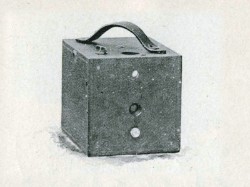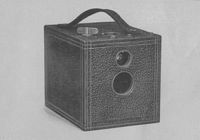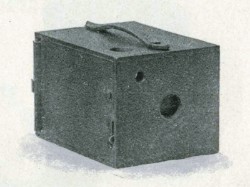The later 1890s
After the introduction of the Bull’s-Eye, Bullet, and Pocket Kodak cameras in 1895 and 1896, a few additional models appeared in the second half of the decade that were simpler and cheaper. The Falcon and Flexo, for example, were inexpensive alternatives to the No. 2 Bull’s-Eye.
During the later years of the 1890s, many small firms produced cheap and simple plate cameras. This segment of the market was not protected by patents—as roll-film cameras were—making it easy for newcomers to start manufacturing basic models. These low-cost instruments were sold to a growing population of amateur photographers. To compete with this influx of plate cameras, Eastman Kodak introduced its own budget line: the Eureka cameras. They were produced in several sizes, but all were designed to be inexpensive and straightforward to use.
With the Folding Kodaks of the early 1890s, the film roll still had to be changed in the dark. Cartridge Kodaks, by contrast, were designed for the new daylight-loading roll films and were much more compact than the Folding Kodaks.
In 1897, the Folding Pocket Kodak was introduced. Since this series continued well beyond 1900, I discuss it in the “1900s” section.



